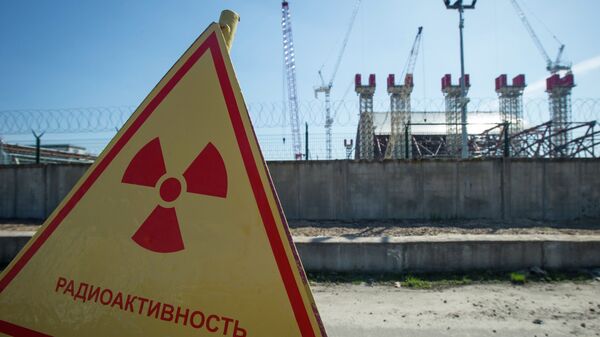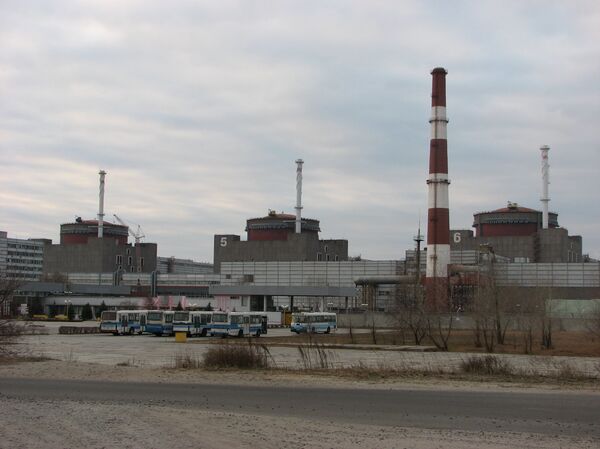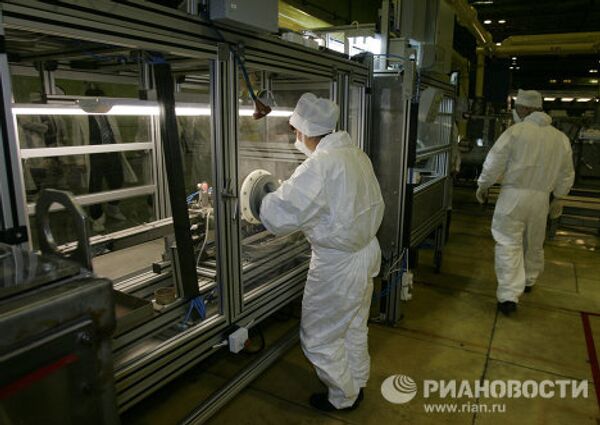Kiev has moved to accelerate the construction of a spent nuclear fuel storage facility in the Chernobyl exclusion zone, Minister of Ecology Ostap Semerak said Thursday. The facility will allow Ukraine to repatriate its spent radioactive materials from Russia, where they are currently being stored.
"We must take [our] radioactive waste materials out of Russia. These had been sent for processing and 20 years of storage in Chelyabinsk [Russia]. The return of the materials was postponed several times due to lack of proper infrastructure, first to 2016, and subsequently, to 2018," Semerak explained, in a post on his Facebook page.
Since the February 2014 Maidan coup d'état, authorities in Kiev have been looking for ways to reduce dependence on the Russian nuclear energy sector in the operation of its four nuclear power plants, which have a total of 15 reactors and generate over 60% of Ukraine's electricity.
In October 2016, after Ukrainian lawmakers approved the construction of a dry storage facility in Chernobyl, Energy Minister Igor Nasalik praised MPs, and said it was a step in the right direction in reducing dependence on Russia. "Every year, Ukraine had paid $200 million for the disposal of the spent nuclear fuel. Starting in 2017, we will not have to pay, since we'll have our own storage facilities," the minister said.
Although construction did not end up moving forward on time, Kiev decided to go ahead and stop paying Moscow anyway. Last May, Rosatom confirmed that it had postponed accepting nuclear materials from Kiev due to non-payment; Moscow also cut off the supply of new nuclear fuel to Ukraine's power plants, leading to the threat of brownouts. Kiev, already facing an energy crisis at the time, quickly resumed payment.
Furthermore, as Svobodnaya Pressa contributor Andrei Polunin pointed out, Kiev's European patrons don't exactly share Minister Nasalik's optimism about Ukraine's homegrown nuclear storage facility. "Representatives of leading nuclear industry organizations of Europe have marked their concern over Ukraine's plans, since the project goes against nuclear safety norms and creates the risks of accidents."
"It must be assumed that what scares the Europeans is not the nuclear storage facility itself, so much as the country in which it is planned to be built," Polunin added. "This is the country where Lviv mayor Andri Sadovy proposed making Chernobyl a national landfill for the dumping garbage from across the country. It's the same country where Radical Party MP Oleg Lyashko introduced a bill proposing Ukraine's exit from the 1968 Treaty on the Non-Proliferation of Nuclear Weapons…"
To begin with, the expert stressed that Ukraine is already 100% dependent on Russian nuclear fuel. "It's true that in recent years, there have been talks about the American company Westinghouse supplying Ukraine with fuel…But things didn't work out: Westinghouse Nuclear has been sold to the Swedes, and is on the verge of bankruptcy."
Russian officials and nuclear physicists had earlier warned that Westinghouse fuel assemblies were not fully compatible with Ukraine's Soviet-designed nuclear technology, and thus posed risks to the safety of its nuclear plant operations. Furthermore, Ostretsov pointed out that the Westinghouse fuel, and other options that Kiev was considering, would still have to be sourced in Russia.
Finally, Ostretsov explained that possibly the most important factor was the expected global crunch in nuclear power plant uranium supplies, expected to begin as soon as next year.
"In 2017, the infamous Gore-Chernomyrdin agreement, whose operation was extended from 2015-2017, is reaching its end," the expert said. "Between 1993 and 2013 Russia, according to an intergovernmental agreement signed with the United States (the so-called Gore-Chernomyrdin deal) processed 500 tons of its weapons-grade uranium into low-enriched uranium for American nuclear power plants and sold it to the US. Over the course of 15 years, Russian uranium provided for 10% of all electricity generated in the US. Russia earned $12 billion under the deal, but according to expert estimates made on the basis of declassified US materials in 1996, this was significantly less than the delivered uranium was actually worth."
"Termination of the program means that this year the world – and first and foremost the United States, will face an acute shortage of nuclear fuel," Ostretsov stressed. "Global enriched uranium production amounts to about 40-50,000 tons per year. Meanwhile, there are about 400 nuclear power plants in the world, which need about 70,000 tons of low-enriched uranium a year to function. This means there is a deficit of 20-30,000 tons. For now, this deficit is closed by 'burning through' Soviet nuclear warheads. But as soon as Russia stops doing this, Moscow will face the question: who to prioritize for the remaining nuclear fuel…the US or Ukraine?"
According to the expert, the answer is obvious. "Yes, America is our geopolitical adversary, but Ukraine is no longer exactly a friendly state, either. Furthermore, we simply do not need a US collapse. If the US is left without fuel for its nuclear power plants, 40% of the power generation capacity of the US East Coast will stop."
Ultimately, the expert warned that absent a new Russian-US deal to renew the Gore-Chernomyrdin agreement, Ukraine's nuclear industry may come to face severe shortages as early as next year.







